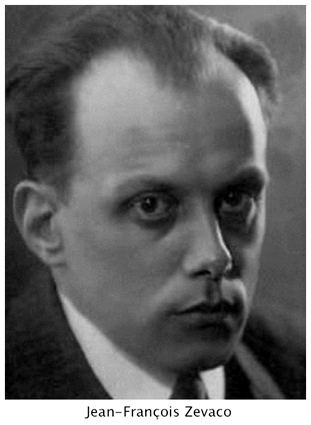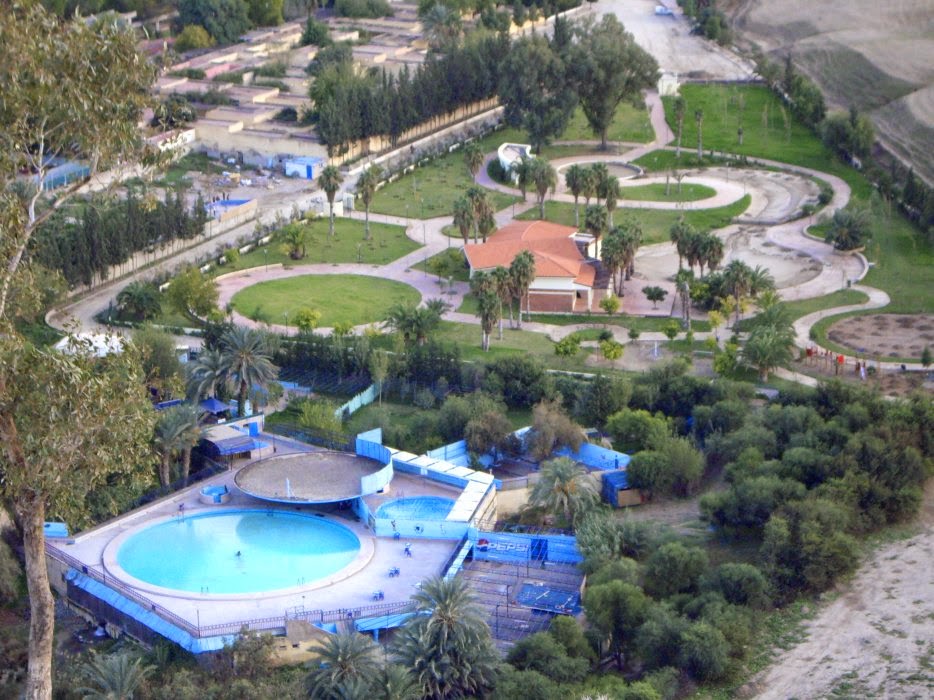Hello Everyone:
It is a lovely and warm early autumn Monday afternoon. Just a quick program note: Blogger Candidate Forum is off this week because its human typist has a family obligation and there will only be one regular post, like today, on Moroccan Brutalism. Really. Shall we check it out?
 |
| Thermal Baths Fez, Morocco Andreea Muscurel, photographer nytimes.com |
Brutalism is a peculiar genre of architecture. People either like or they do not, no in-between. It exists in the canon of modern architecture. What exactly it is?
Brutalism is a period style of architecture that came into the design conscious in the mid-20th century and peaked in the mid-seventies, when it was dismissed as an emblem of bad taste. The word comes from the raw concrete--beton brut--its often mixed from. Known for its use of functional reinforced concrete with steel and modular elements, giving it a utilitarian character. Brutalist architecture was primarily used for institutional architecture, e.g. schools and government buildings. Known for being imposing and geometric, Brutalist buildings have a graphic quality that make them appealing today. (mymodernmet.com; Dec. 4, 2018; date accessed Oct. 7, 2019)
 |
| Sidi Harazem Thermal Bath (1960) Fez, Morocco Andreea Muscurel, photograher Jean-Francois Zevaco nytimes.com |
The photograph on the left, Sidi Harazem Thermal Bath, is an example of how a newly independent country adapted a Western design vocabulary in order to appear progressive and a break from the colonial past. Morocco was not the only country that adapted Modernism in service of appearing progressive. Turkey and Japan did this in the pre-World War II years. In the post-War years, newly emerging former Europeans, like Morocco, adapted Modern Architectural styles, like Brutalism, for the same purpose. Now the work of little known Brutalist architect Jean-Francois Zevaco is getting a closer look thanks to a long-ranging renovation program that will include an economic development and education component. You are probably wondering who Jean-Francois Zevaco was?
 |
| alchetron.com |
Jean-Francois Zevaco (b. 1918) was a French-Moroccan architect, born in Casablanca and educated at the Ecole nationale superieure des Beaux-Arts in Paris. Following World War II, he returned to Morocco to set up his own office and gain local renown designing white modernist villas. His first major commission came in 1960, when he and the members of GAMMA (Group of Moroccan Modern Architects) were commissioned to building new housing and public buildings follow the 1960 earthquake in Agadir. He received the Aga Khan Award for Architecture in the 1978-80 cycle for his Courtyard Houses in Agadir (1965) (en.m.wikipedia.org; date accessed Oct. 7, 2019). Also, in 1965, Mr. Zevaco began his collaboration with the Fondation Caisse de Depot et Gestion, the pension fund responsible for the thermal baths. However, the enthusiasm that greeted his design sifted away; by the end of the 20th century, the owners considered it ugly duckling and discussed selling it to private investors. (nytimes.com; Oct. 1, 2019; date accessed Oct. 7, 2019)
Sidi Harazem was built with "....faceted columns, deep overhangs, and a circular outdoor pool shaded by a disk of concrete that seems to float,..." (Ibid). The late architect's (d. 2003) included baths, bungalows, covered markets and a hotel that mixed Brutalist materials with vernacular elements: bands of blue mosaic tile and copper work" (Ibid). The Moroccan government wanted to attract Westerners to the newly independent country, while preserving its popular heritage sites. Mr. Zevaco' design was to appeal to both sensibilities. The bungalows and public spaces echo the traditional buildings while the elevated hotel and cantilevered shade structure represent the most advanced mid-century international architecture (Ibid).
 |
| Aerial view of Sidi Harazem hiddenarchitecture.net |
As a child Aziza Chaouni, a professor at the John H. Daniels Faculty of Architecture, Landscape and Design at the University of Toronto, shared with The New York Times how she used to go with her grandmothers to the thermal baths seven miles outside of Fez. Ms. Chaouni said that one granmother loved the more modern complex. She said,
She was born and raised in Fez, in the old city and she was very keen on alternative medicine...She was amazed by the new facilities. We would stay in the bungalows that were modeled after the medina--as a child it was like a maze. (Ibid)
Ms. Chaouni's other grandmother preferred the pre-modern baths.
| Sidi Harazem, view from top of hill archnet.org |
Sidi Harazem is set in an arid mountain range and has attracted visitors since the Roman Imperial period. In the 14th-century, Sultan Abu el-Hassan built a shrine to Sidi Harazem, a Sufi cleric, on the nearby plateau (Ibid). Aziza Chaouni recalled,
They used to wake us up at 5 a.m. and walk from Fez, then simply camp... Locals would offer space in their own homes,... For people who lived in Fez, it was their green lung (Ibid).
She continued, Morocco wanted to appear as a progressive young country (Ibid). Jean-Francois Zevaco's interpretation combined European modernism with the vernacular concept of space, "by organizing the project around an interior courtyard, with green plantings that cooled the air. Narrow channels of water wove throughout the complex leading visitors along the circulation path" (Ibid).
| Stair detail from Sidi Harazem domusweb.it |
By the time Ms. Chaouni reached adulthood, the thermal baths had fallen on hard times. It was seeing fewer and fewer visitors, major portions of the complex including the markets and bungalows were shut down. A renovation effort in 2000 attempted to make the still open portions of the site more traditionally Moroccan with green tile veneer over the concrete and carved wood panels. By this point, Modernism had become outre.
In cities like Fez, Boston, Belgrade, and London, the Modern Movement was perceived as alien and alienating to tourists. Brutalism, in particular, was the architectural equivalent of canceled, regardless of Mr. Zevaco's sensitivities to local traditions and his talents.
On a 2001 visit home, Aziza Chaouni went for a swim at Sidi Harazem and was shocked by the renovation. As an Aga Khan Fellow at the Harvard Graduate School, she studied the architecture of tourism in post-independence Morocco, including the work of Jean-Francois Zevaco and the members of GAMMA. She approached the CDG and convinced Rachid Karkari, that with proper intervention, Sidi Harazem could return to its former glory. Mr. Karkari enthused.
| Plan drawings of Sidi Harazem Jean-Francois Zevaco frac-centre.fr |
We were amazed by the splendor of the plans drawn by Zevaco (nytimes.com; Oct 1, 2019). One drawing, the rendering for the thermal station entrance, "The Signal," "plants and people climb up a hillside defined by ridges of concrete architecture, a building that rises up and spreads out at the time" (Ibid). He continues,
We hope, through this project, to restore the image of Zevaco's work so that it regains its former glory. (Ibid)
With Aziza Chaouni at the helm of a team of architects, engineers, researchers, and photographer, won a $150,000 Keeping It Modern Grant (getty.edu; date accessed Oct. 7, 2019) in 2017. Their goal is "restore Sidi Harazem as an architectural masterpiece, building as before on the natural oasis that has drawn pilgrims since the 14th century, but also adding year-round facilities, creating local jobs and expanding the urban transportation network" (nytimes.com; Oct 1, 2019). The grant allows Ms. Chaouni and her team to create a handbook for future restoration and development.
The Getty grants is not just about the architecture. When Ms. Chaouni and her team went to work in 2017, she realized that they had to deal with the legacy of the people who lived in Sidi Harazem in the sixties and now. She told The Times,
Something I discovered as I started working on the project, was that there was a village at the oasis,... All the people in that village were taken and moved on top of a hill, with a mud house for each family, and given one bag of flour each month. Like everything, to do something visionary for the time, it had some causalities (Ibid).
Future plans for the complex include expanding economic opportunities for the local residents and a new Zevaco-inspired covered farmers' market. Another thing Ms. Chaouni realized is that the area's current generation has no idea about the thermal bath's architectural significance. To remedy this, additional grants-funded programs to trained local teens to act as architectural guides. She said,
The challenge compared to other places is the informality,... In the developing world we very often have to deal with issues that very different, lack of funds, lack of expertise, how you raise awareness for heritage that is a double evil? (Ibid)
Aziza Chaouni's final report will address the current human needs and the complicated design history at Sidi Harazem with the hopes that the thermal baths will remain accessible for future generations.
No comments:
Post a Comment